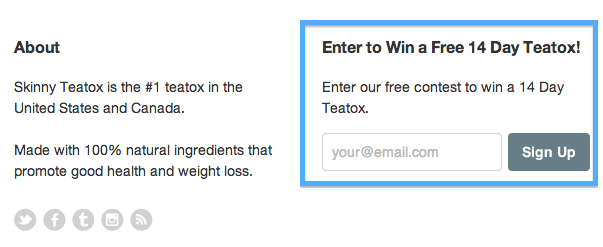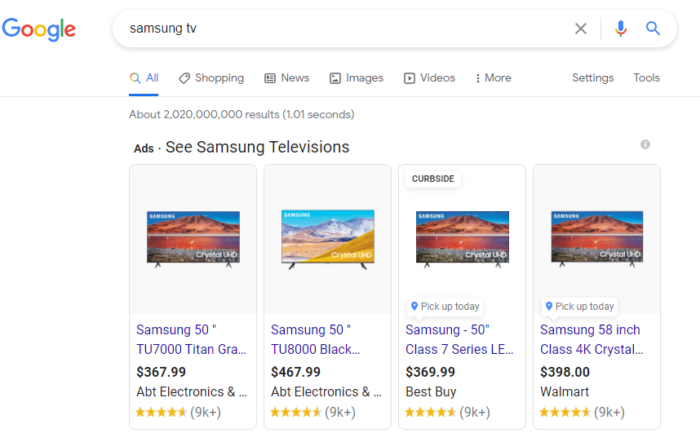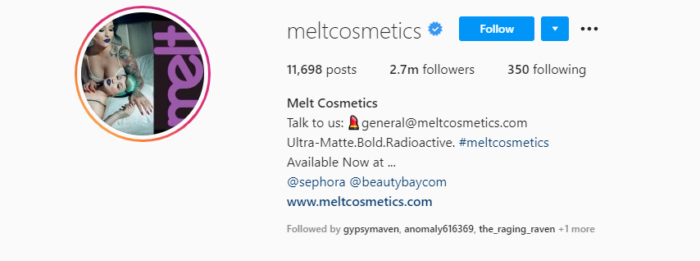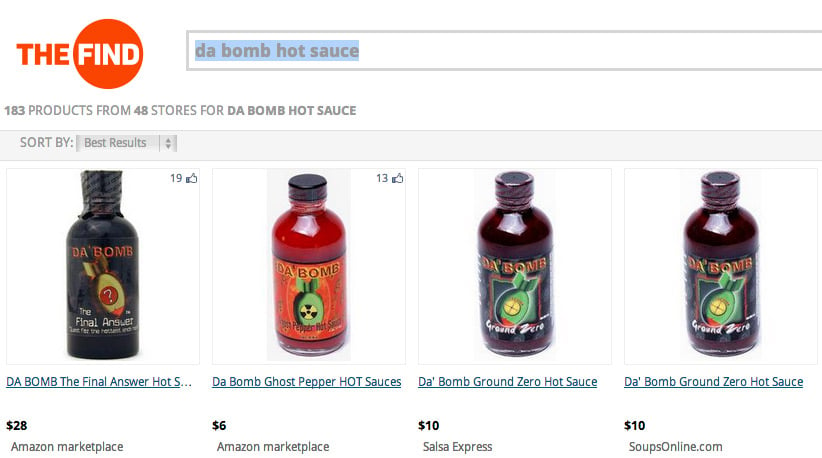
As an online merchant, making your first sale is as symbolic as it is necessary.
Completing the first sale sounds straightforward enough, yet the optimism and reassurance it brings can make it the biggest turning point in the life of your business.
However, don’t let the simple concept of a first sale mislead you. Obtaining that first customer can sometimes be a long, arduous battle.
To make the battle easier to win, below are 24 sure-fire ways to make your first e-commerce sale without spending a ton.
1. Send Free Samples to Influencers
The internet is packed with influential bloggers, journalists, entrepreneurs, and vloggers from a wide range of industries and niches. You just need to find the right ones.
Many of them have large followings on social media and loyal audiences on their websites.
Sending a free sample of your product to influencers within your industry or related to it in some way gives you an opportunity to let them know you appreciate their work with a small gift. Hopefully, you will get a mention on one of their sites or platforms.
This can result in a spike in traffic and social media followers, but you’ll also have a seal of approval from industry experts.
A useful resource regarding influencers is Neil Patel’s definitive guide to influencer targeting, which tells you everything you need to know about getting your brand under relevant, important noses.
2. Start Blogging
If you aren’t already running a blog associated with your store or product, then you’re missing out on the limitless potential of content marketing.
By producing free, valuable content, you create trust in your brand and keep people informed. Blogging also gives you content to share on social media and helps you rank in search engines.
To get started, think of all the starting-point queries people have about your products and industry. Use your blog to answer these questions as individual articles.
For example, visitors to the Shopify blog might be interested in learning about e-commerce and drop shipping. So, they created content that ranks for terms like “how to sell online” and “how to drop ship.”

Additionally, you can use your blog to offer tips, tutorials, and resources related to your products and the lifestyle around your products.
If you can create epic content on a regular basis, you’ll begin to see the power of content marketing via social media shares, search engines, and so forth. All of this is covered in our guide to content marketing.
3. Build an Email List
Building up an email list is absolutely essential to make your first sale — and it doesn’t have to cost you a thing.
According to DMA, email has an average ROI of $42 per $1 spent — not too shabby. Building your email list, however, costs very little.
Having a list of emails from previous and potential customers means you can get your information, products, and content into their personal mailboxes. In contrast, updates made to your Facebook page and Twitter handle will almost never reach your entire following, due to time zone differences and social media algorithms.
Start building your email list by including an email subscription form on your website.
Here’s a clever way to convince visitors to sign up for your list. Instead of simply saying “Join our Newsletter,” offer an incentive or some type of value for signing up. Skinny Teatox offers the chance to win a free product every week, so they showcase that offering to encourage people to join.

If you need some more advice on how to get started, here’s a perfect beginner’s guide to email marketing.
4. Sponsor an (In-Person or Virtual) Event
Sponsoring an event can work wonders — if you use the right approach.
First, ensure you select the right event to sponsor. Search for events where attendees are likely to be interested in your product, and then find out how many consumers will be in attendance.
Then start sorting them by cost.
Avoid sending a convoy of marketers to sset up a table and hand out flyers. If there are potential customers attending, you’ll need to be more creative to build relationships.
Demonstrate some of your most interesting products to tell your story, get people talking, and provide on-the-spot rewards like coupons and free stickers in return for email list subscriptions and social media follows.
Here are some tips from Inc to help you maximize your return when sponsoring an event.
5. Interview Industry Influencers
Remember the importance of content marketing I mentioned earlier? Well, interviewing an industry influencer is a prime way to create epic content.
Interviews work because they are win-win situations. The interviewee gets more exposure, while the interviewer gets their hands on some hot content for their publication, which in this case, is your blog.
Make the most of the interview by asking relevant questions about their lives and careers, but also the industry as a whole. This will ensure fans of the influencer get a taste of their personality, while others will value their expert advice.
Here’s an example by metricool, where they interviewed me about my background and industry trends.
6. Pull a PR Stunt
If you want that first sale fast, pulling a PR stunt could do the trick.
Much like viral videos, a PR stunt has the potential to propel your brand into fame. If executed well, you’ll be swapping conventional time-consuming brand marketing with instant publicity, gaining you loyal followers and customers in the process.
A PR stunt consists of doing something unusual, outrageous, hilarious, or remarkable enough to be worthy of media attention.
As a result, your store could benefit from tons of links from authority news sources, which is great for both traffic in the short term and SEO in the long term.
No company pulls a better PR stunt than Virgin. Their founder, Richard Branson, has dressed up as a wedding bride, jumped off a casino roof, posed as a Zulu warrior, driven a tank down Fifth Avenue in NYC, and flown a balloon around the world, among many other newsworthy things.
To get your creative juices flowing, take a look at Entrepreneur’s list of top 19 successful marketing stunts. They’ve covered everything from outrageous tattoos to left-handed burgers. Remember, a good PR stunt doesn’t require tons of cash or a big brand to pull it off. It just requires creativity.
7. Experiment with Google Ads
Google Ads (formerly AdWords) is Google’s hugely popular pay-per-click advertising network that allows online retailers to place advertisements on nearly every Google search results page, YouTube video, and partner websites.
Who wouldn’t want to rank in the top three of a search query that drives sales? Here’s what shows up when you type “Samsung TV” into Google. Note that the first results are paid ads from Samsung.

The beauty of Google Ads lies in its speed and massive reach. In just a few minutes, you can set up and launch an advertising campaign that gets your text, image, or even video ads seen by browsers all over the web.
Using the AdWords campaign options, you can create targeted ads which are triggered and displayed alongside Google searches when Internet browsers search for predefined keywords. Additionally, your ads also will appear on websites and articles which contain similar keywords.
To get started, check out our Google Ads step-by-step guide.
8. Share the Load with Affiliate Marketing
Trying to sell your products alone can be a difficult task, so why not share the load with others?
Affiliate marketing is when you let other people market your products and send you website traffic. In return, you pay them a percentage of any sales that originate from their efforts. Track their marketing efforts can by providing a unique hyperlink or coupon code.
For example, a website owner may post your affiliate link for a blue sweater for sale on your website. If one of his website visitors clicks the link and then buys the blue sweater, you’ll have made a sale, and as an affiliate, the website owner will be entitled to a percentage of that sale. The great thing about this selling strategy is that you only pay if you make a sale.
The success of affiliate marketing depends heavily on the types of products you sell and the commission percentage you reward affiliate partnera.
To get started, check out this explanatory affiliate marketing guide, which goes into great detail about the different strategies and methods you’ll need to know.
9. Sell Wholesale to Other Retailers
Selling to consumers is fine, but selling wholesale might be just what you need to get the sales going.
One of the main advantages of selling wholesale is the obvious increase in cash flow. There might be a lower profit margin, but quantity can make up for the difference.
Additionally, you’re essentially enabling other companies and resellers to market for you, spreading the word about your merchandise as they buy it themselves. This means selling wholesale could indirectly boost your consumer sales.
For a crash course on the basics of selling wholesale, check out Entrepreneur’s guide to starting a wholesale distribution business.
10. Publish a Press Release
Lots of new online stores push out press releases in order to attract media attention, but fail. It is a far less useful strategy than it used to be, but it can still work.
Getting ignored by every news outlet when distributing a new press release is demoralizing and often a huge waste of resources.
The secret to getting noticed is simple. Don’t publish a lousy press release!!!
First of all, make sure your news actually is newsworthy. Don’t expect a massive response unless you’re giving the public something seriously interesting to read about. Also, a press release should be presented in a way that is concise and professional, without being too monotonous.
Copyblogger has pieced together six ways to write a killer press release, explaining everything from avoiding jargon to creating a magnetic headline.
11. Pay Attention to Site Analytics
The behavior of every website visitor from entry to exit helps you understand why you are selling, and more importantly, why you aren’t.
Your website stats (or analytics) will show you what your customers are doing on your site, including which web pages they enter, the time they spend on particular pages, and the route they take to leave your site. Occasionally, some tools will display additional information, for instance how frequently a customer visits your site.
It won’t cost you a penny, either. Google Analytics is a completely free service, allowing you to measure your traffic in more ways than you can think of.
Here’s an example from Miracle Berry. You can see steady traffic up until early January when there is a huge jump. They looked at their data and saw that the jump came from StumbleUpon, which could be a good indicator that the social channel is worth pursuing further, either organically or via paid placement.

While you’re fighting for your first sale, it’s extremely important to spend time analyzing your traffic in Google Analytics. You never know what you’re going to learn.
If you need a hand getting started, Simply Business offers a comprehensive Google Analytics guide, covering everything you need to know.
12. Run a Survey
Consumer surveys are an ideal tool for obtaining honest feedback. Unlike your friends and family, consumers have no qualms about hurting your feelings by picking at your web design or your marketing material.
To run your very own survey, you can make use of online apps like Survey Monkey and Qualaroo to create online surveys.
QuestionPro has a list of 45+ questions to ask e-commerce visitors, which can help you get the most out of your feedback.
13. Network on Social Media Groups or Forums
Online discussion forums and social media groups are great places to share industry tips and advice, answer questions, and acquire a customer or two.
Use Google or Facebook to find active forums and groups that directly relate to your niche. Twitter chats and Discord can also be home to niche discussion groups. When you post, ensure you aren’t breaking any rules when you promote your brand or products. Get to know the limits and restrictions of the forum, and stick to them. Using your forum avatar, signature, and profile page to promote your brand are usually well within the rules.
No group will tolerate constant promotion or posts full of links to your website. Besides, it makes you look spammy. So, keep it simple by posting just enough for people to notice your activity, but not enough to constitute spam.
Two popular business-focused forums worth getting active on are Digital Point and Warrior Forum, both of which have thriving, helpful communities.
14. Build the Right Relationships
It’s not what you know, it’s who you know. Building the right relationships, both online and offline, can act as your portal to success.
No matter what type of product you sell or which industry you work within, there are like-minded businesses out there, and you need to befriend them.
The trick is to build relationships with others that are closely aligned to your business but not direct competitors.
For example, suppliers, blogs, and websites that focus on your industry would be ideal, as they can help provide you with consumer feedback and offer promotional deals, without stepping on your digital toes.
Take The ecommerce Group for example. Operating via a Facebook group, they have over 2,500 members sharing advice, giving feedback, and providing a helping hand whenever possible.
15. Offer a Contest or Giveaway
Everybody loves free stuff, and if you’re looking to build up some trust while launching your sales efforts, a contest or giveaway could help you do just that.
Not only can contests and giveaways help you build valuable inbound links, they also are a great way to show potential customers that you can be trusted and that your brand means business.
It’s important to remember you don’t have to start big. Tease Tea ran a simple contest on their Facebook page.

This contest costs no money to run and likely took only a few minutes to put together.
Online services like ViralSweep and Gleam allow you to run such contests and giveaways online, helping you to keep things simple and professional without all the added work.
16. Begin Tweeting on Twitter
Twitter’s simplicity makes it one of the most effective ways to engage with your target market. An excellent method for finding potential customers is to proactively search for people tweeting questions about your industry and reach out to them in a helpful way.
The idea is not to pitch or even mention your products – just be helpful. For example, when Gary Vaynerchuk was running Wine Library, he would search “Chardonnay” on Twitter and find people asking related questions.
All he did was offer advice; he never pitched.

As a result, people would naturally look further into who he was, and ultimately discover his business. This is just one of many Twitter strategies that can work wonders for your sales figures.
If you need some real-life examples of how to nail Twitter marketing, take a look at the Twitter profile of online jewelry store Lola Rose, which could teach you a thing or two.
17. Make Connections on LinkedIn
LinkedIn is the office block of the Internet. You’ll find professionals and executives of all types, boasting about their abilities and connecting with others.
After you set up your e-commerce business profile, you can begin doing the same for yourself. You may not make any direct sales through LinkedIn, but you’ll discover an array of opportunities with other companies, suppliers, and related websites.
LinkedIn Groups also are a stellar way to engage with other business owners in your industry. There are tons of public and private groups set up for specific niches, allowing you to post questions and converse with other members.
To find some relevant Groups, search in LinkedIn or ask your followers what groups they recommend.
18. Go Visual with Pinterest, Instagram, or TikTok
Pinterest, Instagram, and most recently TikTok, allow you to take a slightly different approach to engage with consumers.
These platforms are the perfect place to present the creativity and passion that goes into your business behind the scenes. Snap pictures of your products, take videos of the manufacturing process, tell a story with images. Always aim for beauty if possible. People love beauty.
Need some visual inspiration? Melt Cosmetics started as a new brand but now has over 2.7 million followers on Instagram.

They are doing a great job of Instagram marketing, building up a brand image and a following with their beautiful photographs.
19. Don’t Forget Facebook
Make no mistake, Facebook still is a social media powerhouse.
Leverage your personal Facebook profile and your business page to engage with friends, family, and acquaintances and get people talking about your products. Get creative with status updates and interact on public groups and fan pages relevant to your niche.
It’s also important to keep Facebook Ads in mind. Much like Google Ads, you can create targeted campaigns to attract Likes, make sales, and promote your brand.
A popular blow-drying salon in Toronto called Drybar has an extremely engaged Facebook community of over 80,000 who talk all things blow-drying.
If you’re fresh out of ideas for your Facebook business page, check out Shopify’s ten ways ecommerce brands can increase traffic and sales with Facebook.
20. Beat the Competition on Comparison Shopping Engines
Most consumers like to shop around before making a purchase, and that includes a visit to search engines and sites like Amazon.
Popular engines include Google Shopping, PriceGrabber, Amazon, and a range of others, all comparing thousands of products and stores simultaneously.
Here’s an example from The Find where I’m searching for a price comparison on my favorite hot sauce.

To get noticed, you need to play by the rules of each engine, stay competitive in terms of price, and play the waiting game while you experiment to find out which engine suits you the best and gives you the best ROI.
Shopify has a list of the 10 most popular comparison shopping engines with a brief explanation of each one and how to use them to drive traffic.
21. Create an Infographic
An infographic is exactly what the name implies, a graph of information — and they are really easy to create these days using tools like Canva.
Infographics are gold when it comes to social shares and search engine traffic. According to Content Marketing Institute, 65 percent of marketers use infographics for content marketing — and they can easily double your traffic.
In fact, according to UnBounce, which has created an inspiring and detailed guide to marketing with infographics, people are searching for infographics like you wouldn’t believe. They can also help attract links, which is good for SEO.
22. Design Your Store to Look the Part
First impressions are everything, and when it comes to selling online, first impressions rely heavily on web design.
Visitors need to be able to understand your brand and products without too much scrolling or exploring. Furthermore, navigating your catalog should be easy, if not enjoyable.
Additionally, making your store responsive to mobile devices is crucial. More than half of all internet traffic happens on a mobile device, so make sure your site works and looks good on phones and tablets.
If you are using WordPress look for themes that are specifically designed for e-commerce.
To get some creative ideas about your own store’s design, have a look at Inspired Magazine’s roundup of 60 stunning online stores.
23. Host a Pop-up Store
Just because your store began online doesn’t mean it has to stay online. An e-commerce pop-up store could be just what you need to complement your online presence.
Unlike traditional bricks-and-mortar premises, a pop-up store is temporary and costs much less.
A pop-up store is all about location. You can open a pop-up store at farmers markets, art fairs, shopping malls, galleries, and any other place people gather. Just make sure you’re set up in an area that is clearly visible and where your target market will be wandering.
A pop-up store also can act as a great offline marketing outpost. You can use your store to hand out coupons to be used in your online store, and you can collect email addressess and social media followers.
For some ideas on how to get your pop-up store going, Social Media Examiner compiled 51 pop-up store ideas to inspire you.
24. Document your Launch on Reddit
Reddit is a socially powered news and entertainment website where users submit content. More importantly, Reddit is a place where you can attract a large number of dedicated followers and customers.
Using the r/entrepreneur subreddit in particular, you can introduce your brand, gain feedback from consumers, and learn lessons, while also promoting your own products.
The process has to be one of give and take, though. Walk those entrepreneurial redditors through your journey, take them behind the scenes, detail your mistakes and expose some personality in order to gain not just customers, but fans, too.
A brilliant example of using Reddit to promote an online store is what the guys at Beardbrand did. The beard grooming specialists documented their launch on the r/entrepreneur subreddit, getting valuable advice from subscribers and customers, while giving back to them via regular updates and inside information.
Here’s the founder posting an update to the r/entrepreneur community.

Note how many upvotes and comments this post received. Reddit can be an extremely powerful tool, but it can also be fickle. Take the time to get to understand the community before diving in.
Conclusion
Setting up your e-commerce store is no easy task, but there are plenty of online shoppers ready to spend cash online. The 24 strategies listed above are stellar ways to kick-start sales for your online store.
With the right approach, you will need only a handful of the strategies listed above to make the first of many sales. If you need a little help getting traffic, reach out.
Which strategy will you use to make your first e-commerce sale?
The post 24 Ways to Make Your First E-Commerce Sale (Without Spending a Ton) appeared first on Neil Patel.
from Blog – Neil Patel https://ift.tt/2OOcbh5
via IFTTT
No comments:
Post a Comment